- 會員登入
- 加入會員
- Call : 07-6561921 轉6664 ~ 6666
- fgce@ecp.fgs.org.tw
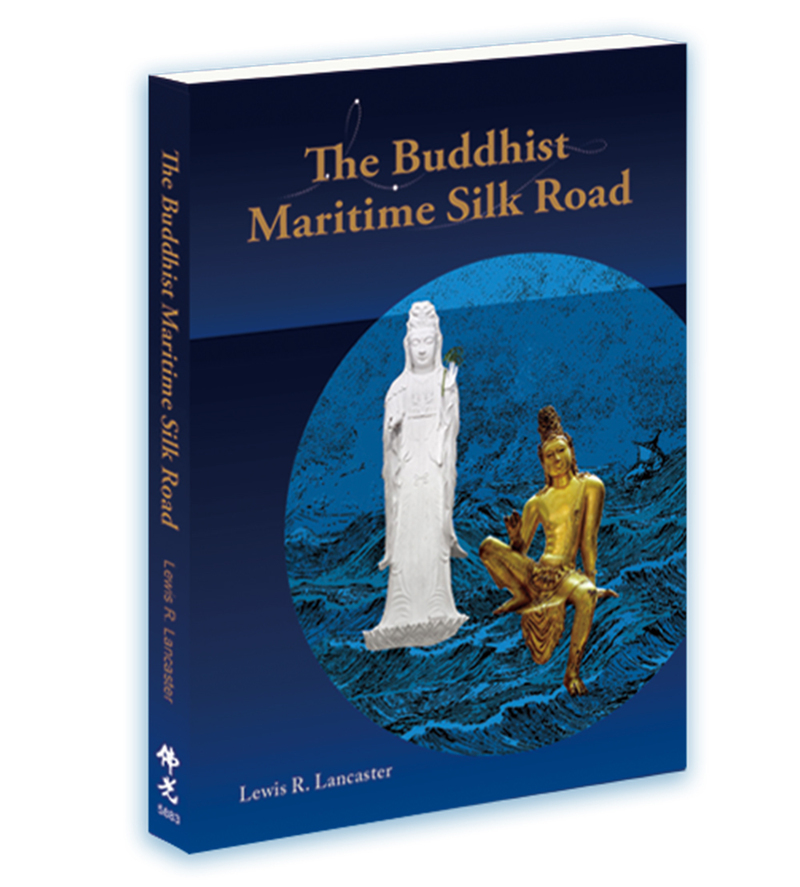
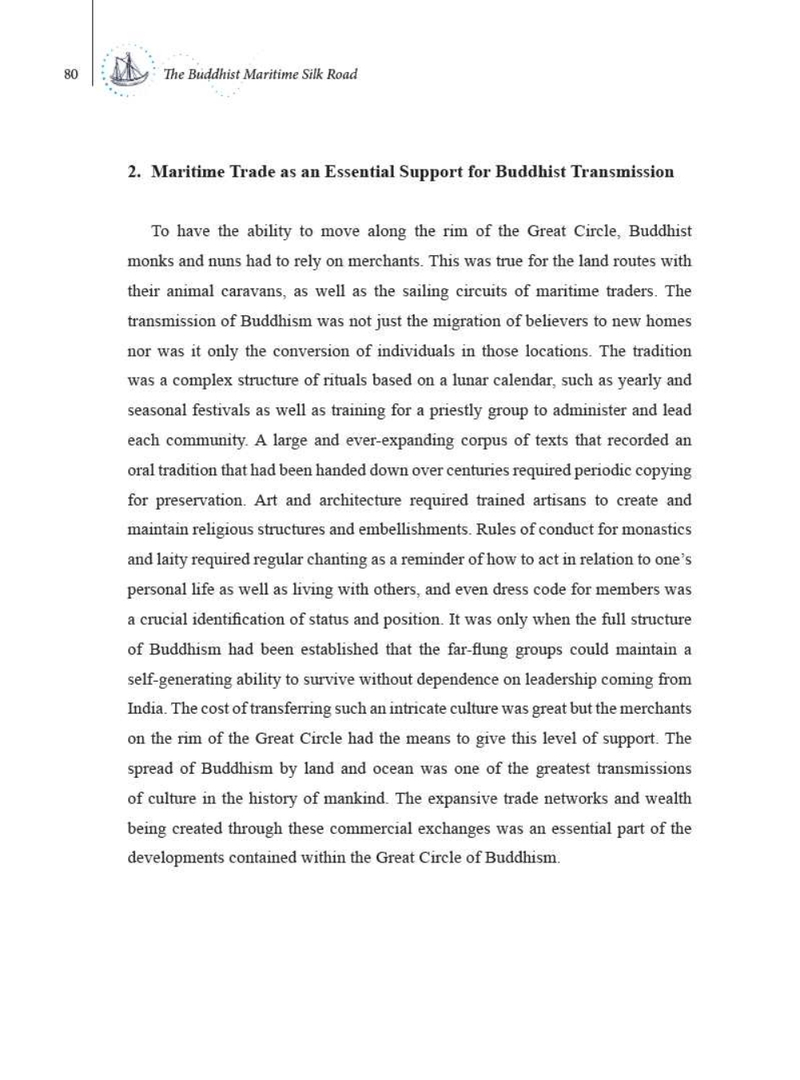
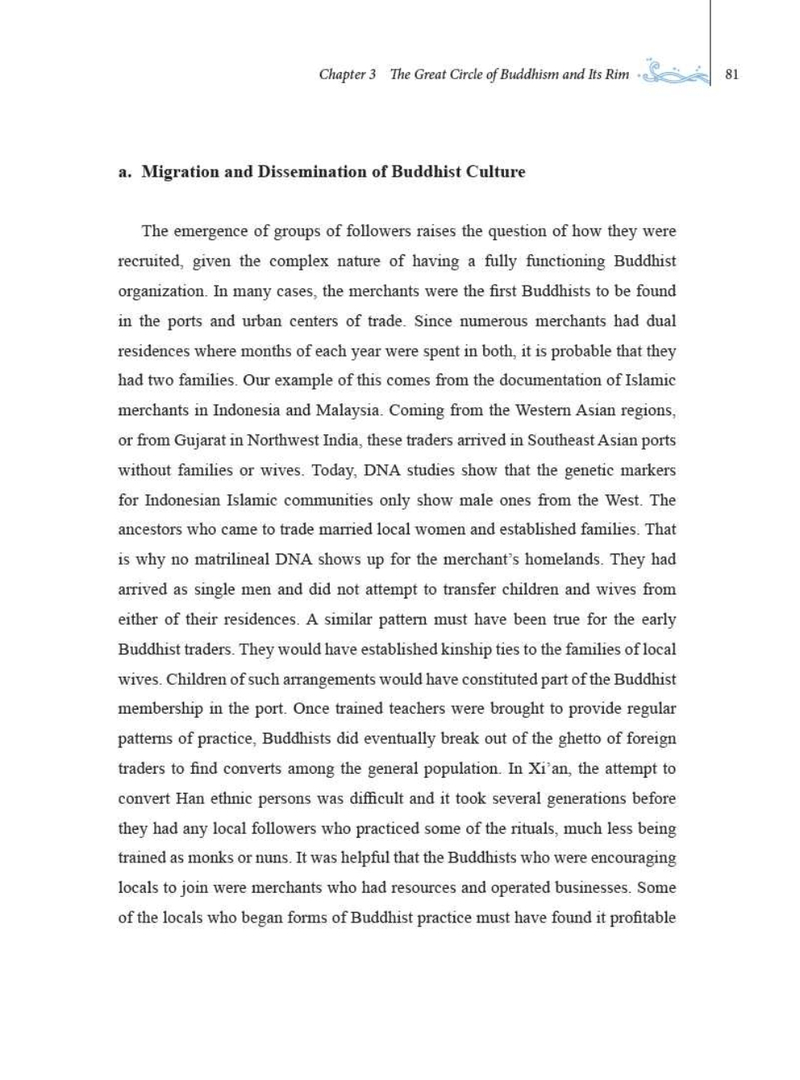
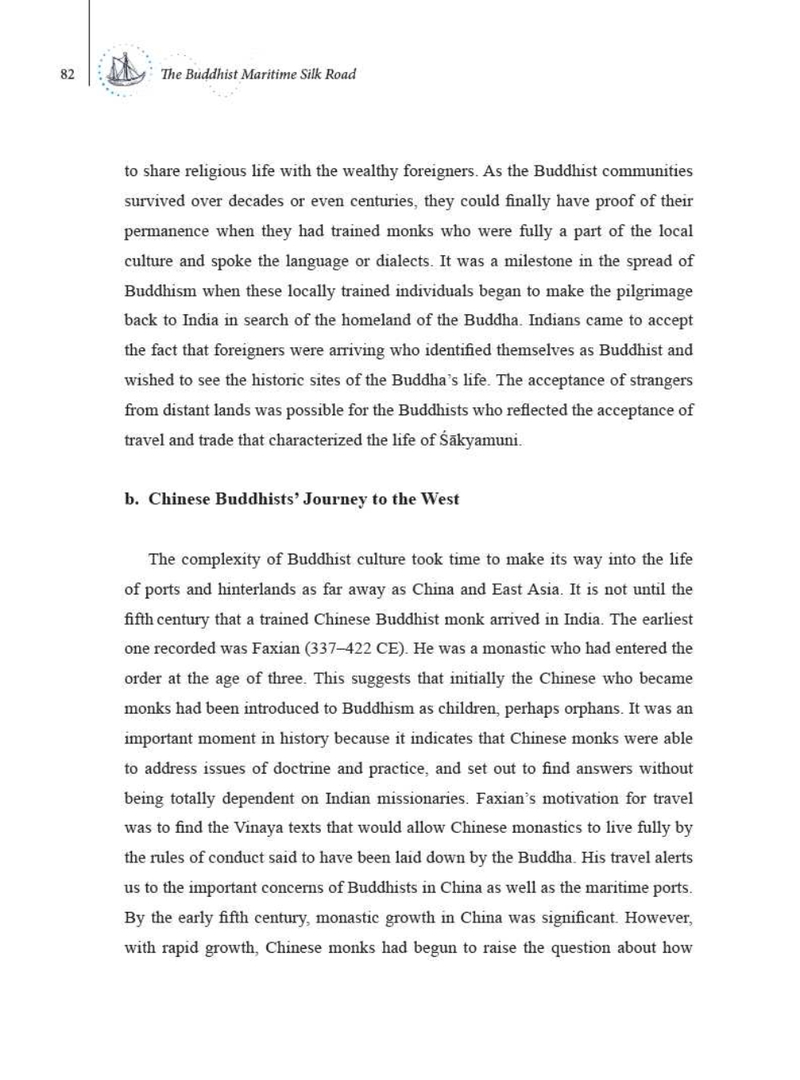
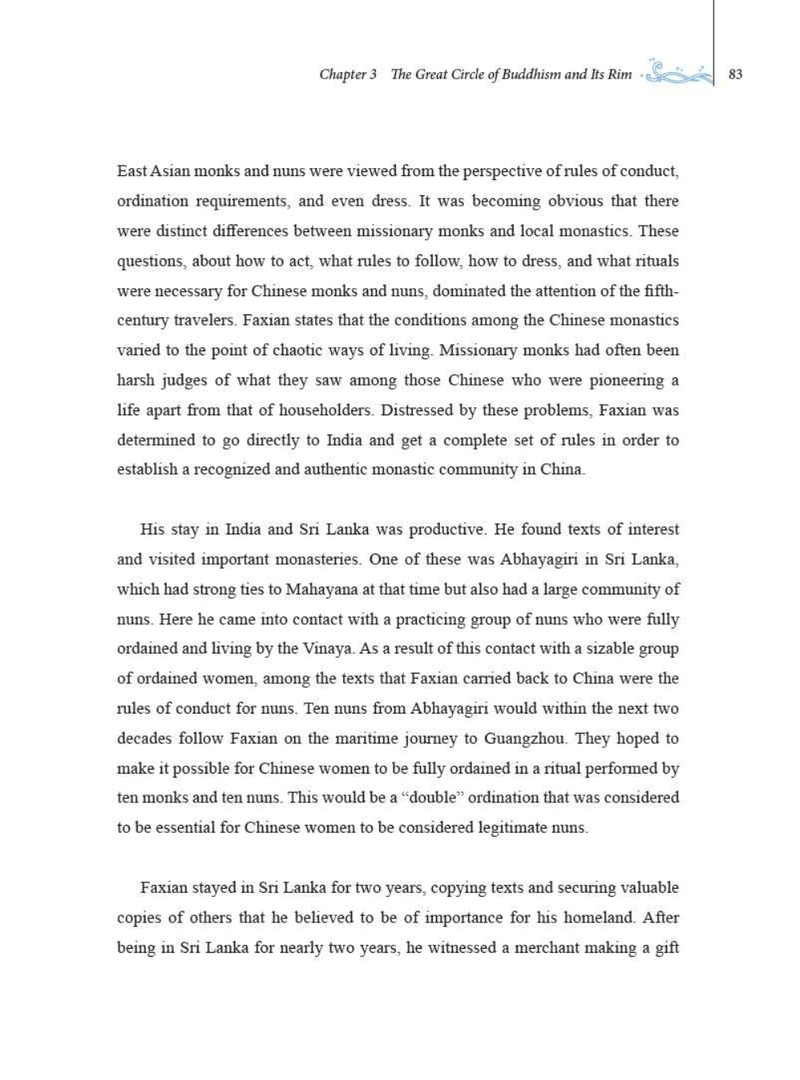
書籍編號 :5883
作者 : Lewis R. Lancaster
出版社 : 佛光文化
出版日期 : 2022-05-16
ISBN : 978-957-457-632-6
頁數 :224
裝訂 :
定價 :360.00
本書折扣:9折,優惠價為:324
The Buddhist Maritime Silk Road recounts the magnificent history of the world of Maritime Buddhism from a diverse range of aspects—the various Buddhist traditions, pilgrims and monks, causes and conditions, norms and rituals, cross-cultural relations between East and West, as well as the intricacies of navigation technology, and migrations of the Austronesian peoples—all remarkable and crucial elements of the transmission of Buddhism brought to new heights of importance.
In this book, Dr. Lewis R. Lancaster innovatively shifts the focus to documenting the dynamic networks and systems of interchange in Eurasia, instead of the common approach of historical, event-structured analysis. The fascinating history of the spread of Buddhism begins in the early years of the Common Era, when animal caravans began treading across the inland routes between India and China, evolving as sea routes flourished over centuries. It emerges that Buddhism flowed and thrived along with the beating pulse of the trading networks. The northern overland and southern maritime trading routes converged, conjuring forth an iconic cycle described by Lancaster as “The Great Circle of Buddhism.”
The book consists of five chapters:
Table of Contents
Acknowledgements
Forewords
Preface
Chapter 1 Introduction
Cross-Regional Connections in Eurasia
Chapter 2 Origin and Spread of Buddhism
Chapter 3 The Great Circle of Buddhism and Its Rim
Chapter 4 Buddhism along the Sea Routes
Chapter 5 Conclusion
Appendix
List of Illustrations
Illustration Credits
IndexForeword
This book summarizes a transformative account of the development and spread of Buddhism. It represents both the fruit of a lifetime of dedicated scholarship and also an enthusiasm for collaboration.
A quarter of a century ago Professor Lancaster invited a diverse group of scholars to meet at his home to discuss how learning in the humanities and social sciences could be aided by greater attention to time and place. The outcome was the formation of the Electronic Cultural Atlas Initiative (ECAI), a rather informal collaboration for which the University of California, Berkeley, School of Information provides an administrative base. The designation “Initiative” is significant since ECAI is not a project, a center, or a program, but it has always been a vehicle to encourage and to promote the work of others by means of community building, workshops, the promotion of best practices, the development of new techniques, and demonstration by example. This book exemplifies and illustrates the ECAI approach.This text was created to accompany the advanced exhibits created to reveal a new understanding of the spread of Buddhism. It is also noteworthy in two other ways. First, in the best tradition of scholarship, it constitutes a challenge to received opinions and assumptions and, second, it makes use to a remarkable extent of an unusually diverse range of evidence, including DNA, wood preserved in mud, and metallurgical analysis, in addition to the usual textual and archaeological evidence, not to mention the highly advanced photography and projections for the exhibit it was written to accompany.
─Michael K. Buckland
Professor Emeritus, University of California, Berkeley
Co-Director, Electronic Cultural Atlas Initiative5. Buddhist Expansion in a Great Circle
The history of contact between these two major regions of China and India was not limited to cargo and economic gain. Along those corridors that defined the mapping of the systems of interaction, culture, religious practice and belief came along with merchants. If we map Buddhist expansion over time and place, it can be roughly described as a “circle.” I have called it The Great Circle of Buddhism. In many ways, the Circle functions as a “rim” that marks the outer regions where the Buddhist tradition was found. I was inspired to think of the Buddhist world as a circle by the diary of an eighth-century Korean monk, Hyecho, who made his way from Korea down the coastline of China, through the islands and coastal ports of the southern seas until he arrived in India. There, he chose to continue his journey through Inner Asia back to China. It is important to consider that this monk knew that he could go down to the seaport in Korea and travel by ship to India. He had knowledge of the Great Circle and was able to follow its rim. His diary, probably recopied by a scribe at Dunhuang caves in Western China, was eventually placed in the famous cache of documents found in Cave 17 and there it was preserved. Paul Pelliot, the French sinologist found it in the early years of the twentieth century during his visit to Dunhuang. He made it known to the world and Korea. Since Hyecho stayed in China until his death and never returned to his homeland, knowledge of him in Korea was lost until his travel record was uncovered on the distant rim of his Great Circle journey, centuries after his lifetime.
The rim of that circle boundary of the geographic presence of Buddhism might be expected to be a marginal area for the religion. Certainly, it has not been used to describe the development of the tradition with the same focus as that assigned to capital cities, mountain centers, pilgrimage sites, and monasteries found within the interior of the circle. However, if we wish to study the spread of Buddhism from India to China, it is the rim that provides us with much of our information and a way of studying how influences moved around the entire perimeter of the Great Circle. The dynamic of the flow around the rim, going in both directions, has yet to be fully explored. What is apparent is that the rim of the Great Circle, whether it was a trail through the desert or a port along the coastline, is crucial to our understanding of the spread of Buddhism. A sizable part of the tradition functioned in the narrow lines that marked the boundary of the Buddhist area. While the interior of the Great Circle was home to important and sizable events and institutions, the flow along the rim cannot be ignored in any history of Buddhism.
In Buddhist studies, as mentioned above, there has been a focus on the caravan routes for the history and spread of the tradition. In part, this focus on the caravan routes has been due to the interest in the archaeological discoveries that provide data for research on land-based sites in ways that are not so easily done for the sea. Ships can sail from port to port and leave nothing in their wake for us to study. It is only in the scattered wrecks on the ocean floor or archeological sites at the harbors that artifacts are to be found. From the recovered material such as pottery or metal objects found in the wrecks, we at least have something that is tied back to the past and from these items, we glimpse a way of life that has long ago disappeared. We are fortunate to have new technology for remote sensing that is uncovering a larger number of heretofore unknown sites deep underwater. While there is a growing interest in these sunken ships, they lack some of the appeal of archaeological sites on land because they are not easily accessed.
The structure, including the width of the rim of the Great Circle of Buddhism, varied from place to place. Along the caravan trails, it was defined by the routes that woundthrough Inner Asia leading to the heartland of the Han dynasty. This part of the rim was marked by “nodes’’ that were small urban developments and monastic institutions established at convenient intervals along the caravan routes. The rim through Inner Asia was often very narrow. In some places, it was merely a series of footpaths that the caravans followed. There were no populations for long distances on either side of the trails, save at the nodes which were essentially service centers for the caravans. These urban developments were not dependent on local trade alone because it would not have been sufficient to provide the incentives for such a massive system. Lines of trade and communication in Central Asia, that marked the demarcation boundaries of Buddhism, were less dependent on support and activity along the way than they were on the driving forces that arose along the Western seaports of India and ended at the Han capital of Chang’an. International trade helped and in some cases initiated and sustained this thin long line as it snaked through the mountains and basins of Central Asia. Being dependent on distant sources and markets, the rim of Central Asia was susceptible to the rise and fall of such mercantile activity. Without a local support base to be a backup, commerce for this region was fragile and subject to decline when the markets of the larger world shifted focus and methods. The towns that grew up along the rim of the Great Circle in Inner Asia were, therefore, often merely interim support bases for the relay of trade and goods between India and China. Without that active movement of people and goods, there was no support for many of them. In Australia and the U.S. where large areas of sparse population are crossed by modern highways and railroads, nodes of fuel, food, and rest stops thrive on the custom of the travelers. The travelers do not make the journey for the sole purpose of stopping at these nodes nor were the nodes constructed to serve the small populations living in the local area. We can only understand such developments as part of a larger system of travel and communication that has purposes not defined by the specific location. Where such systems exist, changes can be dramatic, as along the rim in Central Asia. We witness the result of changes by traveling along this route today and passing one abandoned city after another. This is often explained in several ways, including ecological disasters of water shortage, the impact of “invasion” of Islamic merchants, and culture into the region. Less attention has been given to the impact of the economic basis for the rise and fall of trade route populations. A few cities that survived and functioned around the Taklamakan basin had sufficient population and an agricultural production area to remain viable over time. However, even these cities, such as Kashgar, while not abandoned, are now considered to be isolated from major commercial activities, and they are smaller than their historic footprints in the ancient past.When we turn from the caravan routes to the rim of the Great Circle of Buddhism that ran along the thousands of miles of coastline from the Western part of India through Southeast Asia and the Chinese coast, the story for this system is also determined by trade and communication links. Even seaports that once flourished could be abandoned as patterns of trade shifted. We see this, for example, at the former seaport of Óc Eo in the Mekong Delta of Vietnam. When Chinese envoys visited the city in the fourth century, they described a vibrant international trading center with houses built on stilts to survive the annual flooding of the river. It was of sufficient importance to attract the Chinese visitors and to have their report of it preserved. Today, Óc Eo is a beautiful thousand-acre rice field that can only be imagined in its former glory. It was a possible victim of technology development and changing patterns of trade between China and the Srivijaya capital of Palembang in Sumatra. When there were larger and stronger vessels that could make longer open sea journeys, such as the one between Sumatra and Guangzhou, they did not need to make intermediate stops in places such as Óc Eo. Once the flow of trade took a new route, even a thriving city port in a rice-growing region with a large river nearby lost a reason to exist as a port. It could not sustain its importance without being part of a functioning system of international trade and it was eventually abandoned. We find similar ports in India that were once much more active than today and others that are now identified only through archaeological excavations. In some cases, silting and shifts in the coastline accounted for abandonment. However, it appears that sea routes are as susceptible as caravan roads to the waxing and waning of trade patterns.
Our study of abandoned sites is necessarily complex and dependent on interpretation of the data. For example, archaeology can show us the patterns by which the infrastructure of cities deteriorated over time. This data raises the essential question of why the occupants no longer maintained the necessary roads, canals, dams, wells, and agriculture to meet the basic needs for the occupation of a site. The history of this decline can often be clearly traced in the layers of archaeological excavations. The reasons for this abandonment are less easily seen in these physical artifacts. The determination of why Buddhism flourished at certain times on particular segments of the Great Circle and at other times declined and even disappeared, cannot be separated from the organized integrated whole of the elements of life along the trade routes. As we study the Great Circle of Buddhism and look at the series of abandonments along it, one knows that great differences exist between Inner Asia and the sea coasts of the Mekong Delta. And yet, these far-flung distances have commonalities. They are linked by the fact that Buddhism once passed along these sites and was a dominant factor in their histories. Whether by sea or land, the rise and decline of the religion went hand in hand with the states of physical sites that grew up along the rim of the Great Circle. After all, religious practice is a human endeavor and can only exist where there is a population. If places of habitation are abandoned as commercial centers, so too, religion, for that place, faces the same fate.At one level, what we witness in every segment of the Great Circle is a system of activity that was in some parts economic and in others cultural. The demise of Buddhism, in areas where there was a major shift of population and commercial enterprise, can hardly be solely attributed to some internal weakness of the religious tradition. Each segment of the rim of the Great Circle contained an aggregation of functions that fit together to form a distinctive and coherent whole, a structure of a great variety of parts that at certain times were related and unified. When changes occur, even the most complex system may be powerless to resist the results of these shifts. The dramatic ruins of abandoned cities along the rim of the Great Circle give certainty of the degree to which changes can occur in social formations. Such considerations in one way challenge the ecological and invasion explanations for the abandoned cities of Central Asia, or at least suggest that these explanations are not the only possibilities by which to judge events in that region.
The rim was also important because it was a place where cultural interchange often took place. Since the rim has been mapped by the outer limits of the presence of Buddhist activity and artifacts, it can also be considered the rim of the neighboring non-Buddhist cultural features. Of course, the interconnected aspects of sites where Buddhism existed but shared the space with other religions creates a less than perfect separation. The rim was often a cosmopolitan mixture, and in some situations and periods of time, Buddhism was not the dominant religion. It is at this point that the approach of using points on a map (dots) linked to data, is not sufficient to deal with the dynamics of the rim. This leads us to look beyond those dots on a map that identify sites or nodes along a line that stretches for hundreds of miles. To understand the nature of those nodes we need to look at the lines (edges) which connect the nodes.




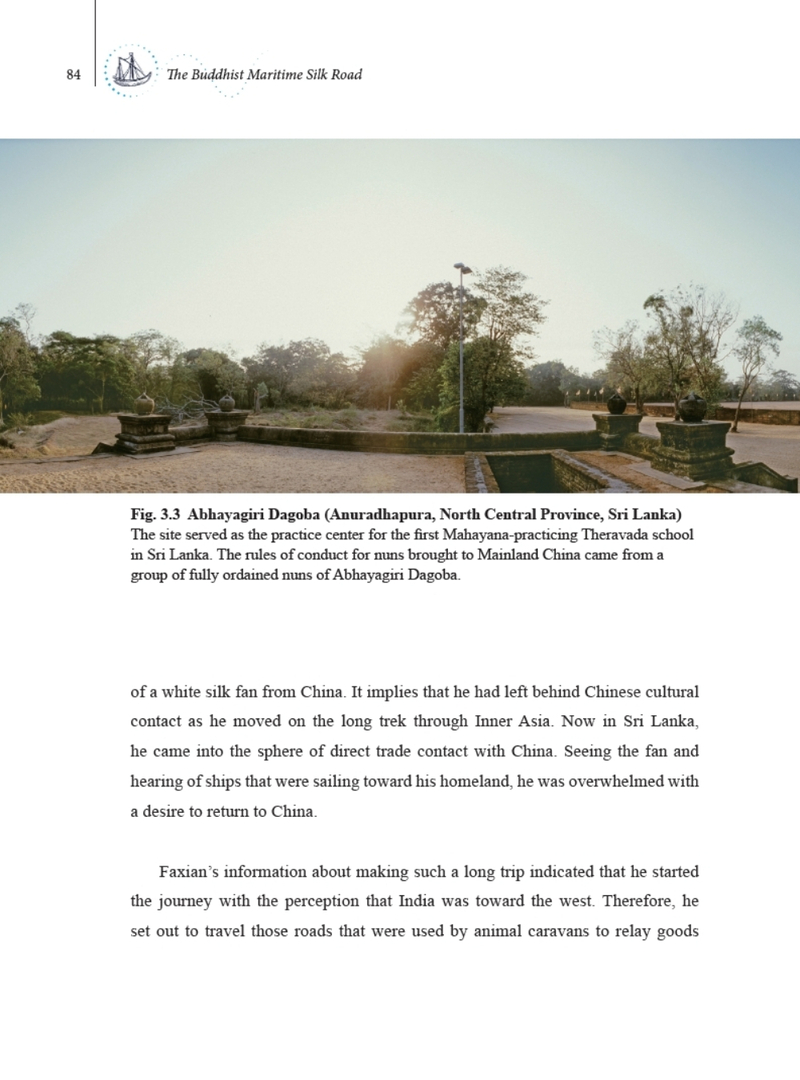
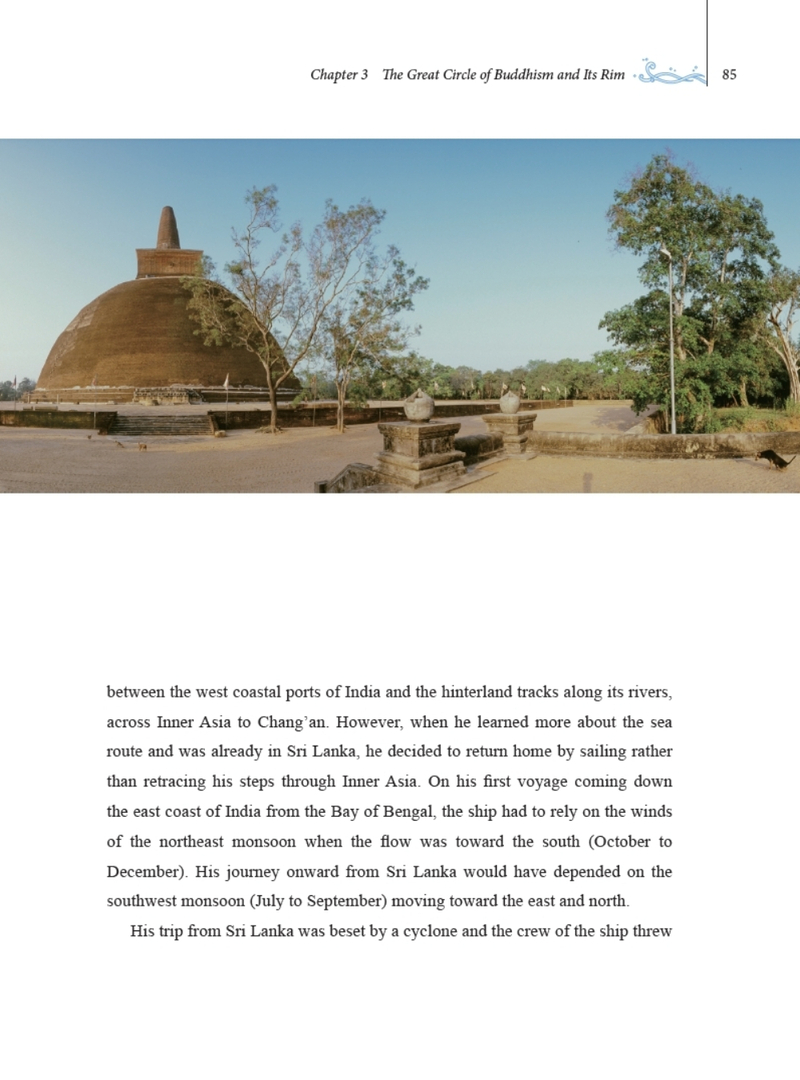
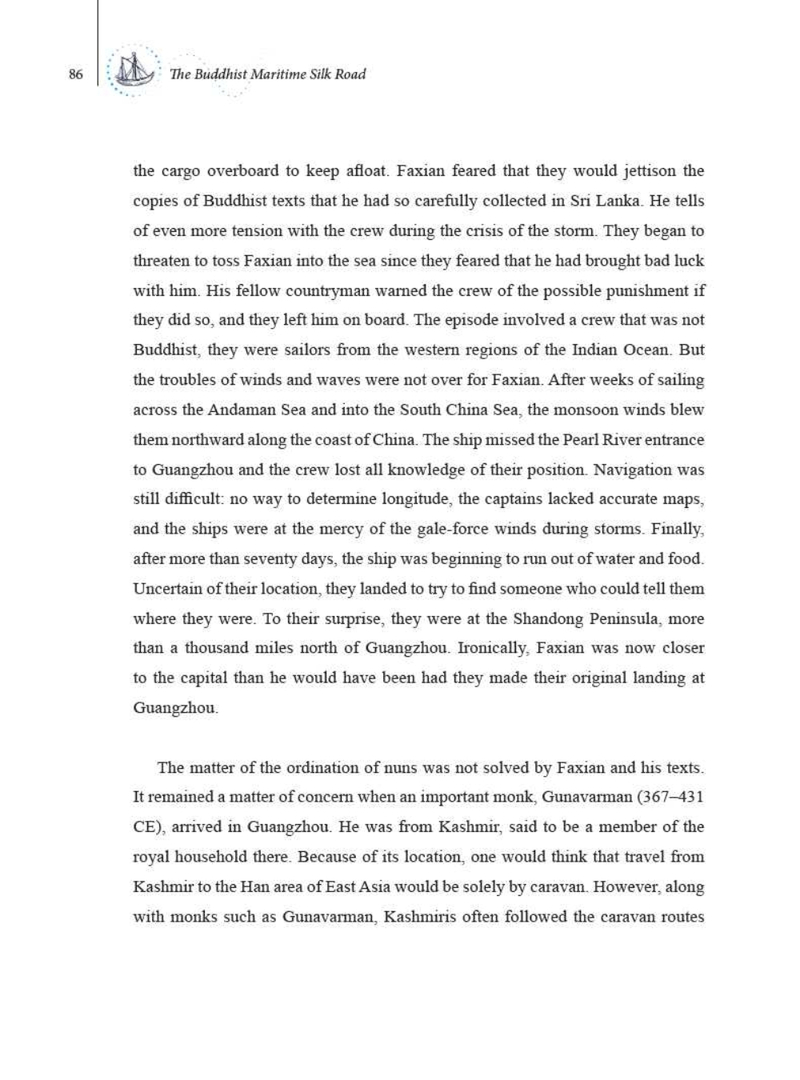
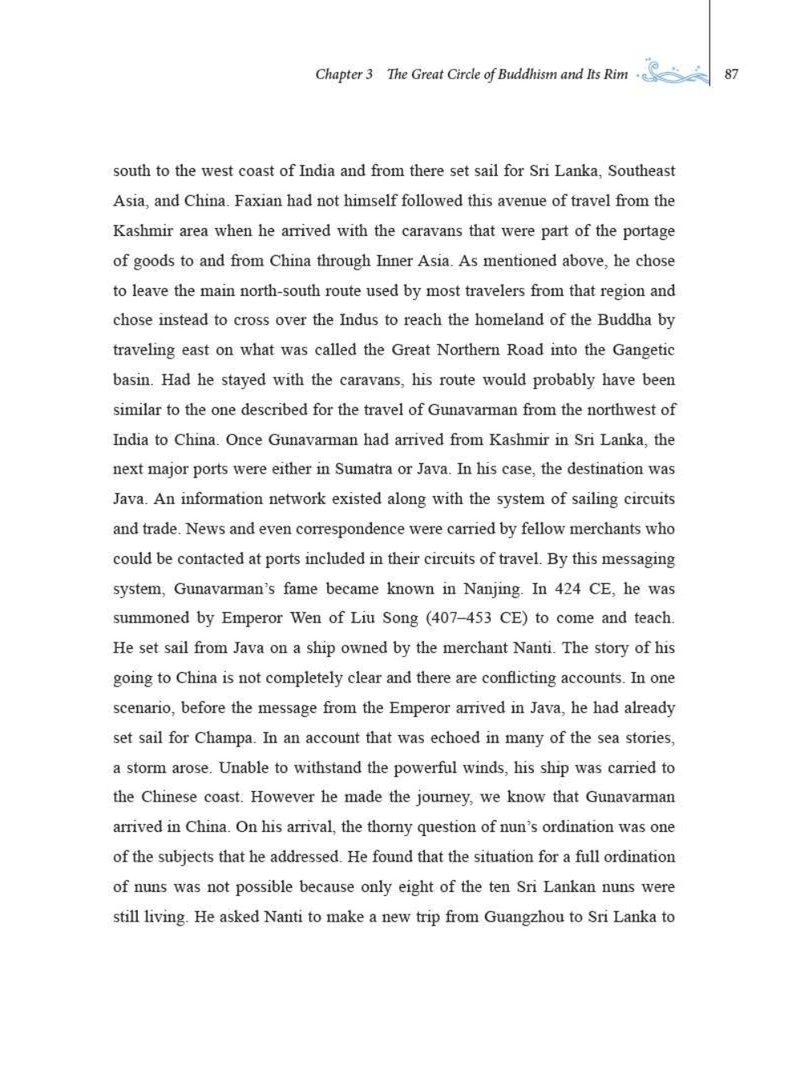
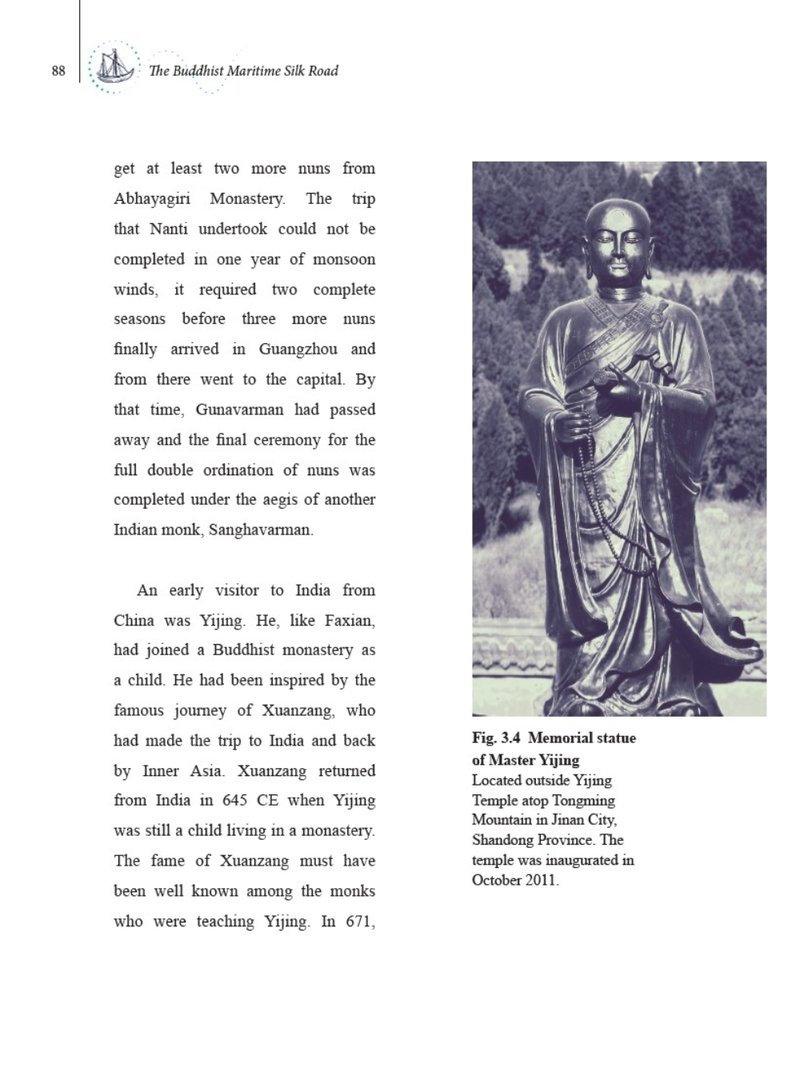
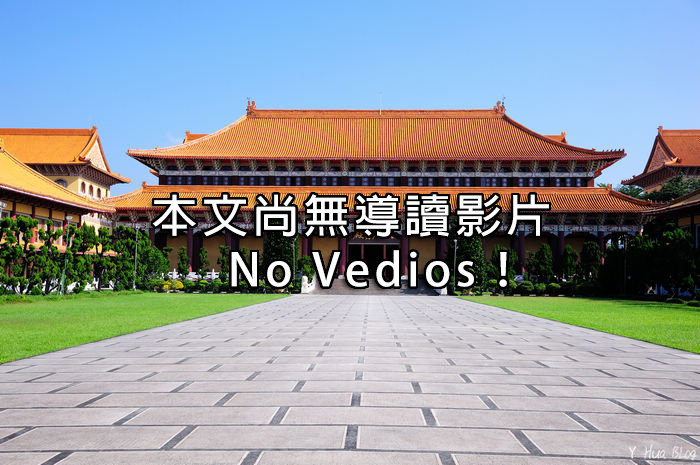
About the Author
Dr. Lewis R. Lancaster is Emeritus Professor of the Department of East Asian Languages at the University of California, Berkeley, USA. He is also the founder and Director of the Electronic Cultural Atlas Initiative (ECAI). He has published and edited numerous books on Buddhism, including Prajnaparamita and Related Systems, The Korean Buddhist Canon, Buddhist Scriptures, Early Ch’an in China and Tibet, and Assimilation of Buddhism in Korea. He is a leading figure in the digitization endeavors of Buddhist texts, a contemporary practice in the Buddhist scholarly world today. He is also now guiding the Atlas of Maritime Buddhism project.

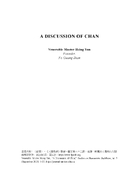


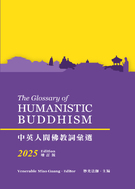
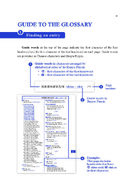
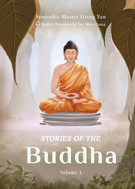
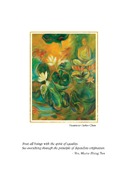
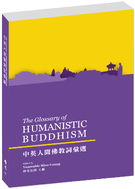
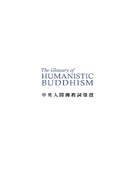
07-6561921 轉6664 ~ 6666
07-6563605
Email : fgce@ecp.fgs.org.tw
高雄市大樹區興田路153號
© 2025 佛光文化事業有限公司,統編:96958655 版權所有 All Rights Reserved. 26682751